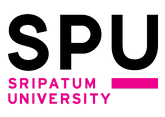Please use this identifier to cite or link to this item:
http://dspace.spu.ac.th/handle/123456789/5878| Title: | พฤติกรรมทางความร้อนของผนังเบาเปลือกอาคาร แบบโลหะแผ่นร่วมกับวัสดุเปลี่ยนสถานะ |
| Other Titles: | Thermal Behavior of Lightweight Metal-Sheet Building-Envelope Incorporated with Phase Change Material (PCM) |
| Authors: | ชลธิศ เอี่ยมวรวุฒิกุล ชวลิต มณีศรี ณัฐวัฒน์ จุฑารัตน์ |
| Keywords: | สารเปลี่ยนสถานะ ผนังเปลือกอาคาร การอนุรักษ์พลังงาน ภาระการทำความเย็น PCM Building-Envelope Energy Conservation Cooling |
| Issue Date: | 25-December-2018 |
| Publisher: | วารสารศรีปทุมปริทัศน์ ฉบับวิทยาศาสตร์และเทคโนโลยี |
| Citation: | ชลธิศ เอี่ยมวรวุฒิกุล, ชวลิต มณีศรี,และ ณัฐวัฒน์ จุฑารัตน์. 2561. พฤติกรรมทางความร้อนของผนังเบาเปลือกอาคารแบบโลหะแผ่นร่วมกับวัสดุเปลี่ยนสถานะ. วารสารศรีปทุมปริทัศน์ ฉบับวิทยาศาสตร์และเทคโนโลยี ปีที่ 10, มกราคม - ธันวาคม 2561, 186-197 |
| Abstract: | Heat Transfer behaviour through light building envelope wall can be managed using Phase Change Material (PCM) to enhance latent thermal mass with minimal burden on wall structure. By absorbing heat during the day and releasing it at night, PCM incorporated wall can reduce diurnal maximum inner wall surface temperature and decrease cooling load for air conditioning system. The research numerically investigated thermal behaviour daily cycle of a lightweight metal-sheet building envelope with fiberglass insulator incorporated with varied amount of PCM layer under Bangkok weather condition. Implicit Finite Difference Method using Crank-Nicolson scheme was applied for numerical calculation. The result indicates that the amount of PCM used influents the effectiveness of wall temperature reduction and how latent heat storage is activated per weight of implemented PCM. |
| Description: | การจัดการการถ่ายเทความร้อนผ่านผนังเบาเปลือกอาคารแบบโครงสร้างแผ่นโลหะ สามารถทำได้โดยการใช้สารเปลี่ยนสถานะ (PCM) เพื่อเพิ่มมวลความร้อนแฝงโดยไม่มีผลกระทบต่อมวลของโครงสร้างผนัง ในการดูดซับความร้อนจากภายนอกอาคารในช่วงเวลากลางวัน และปลดปล่อยออกในช่วงเวลากลางคืน ทำให้ช่วยลดอุณหภูมิสูงสุดที่เกิดขึ้นบนผิวผนังและลดภาระการทำความเย็นสูงสุดของการปรับอากาศภายในอาคาร การศึกษาได้ดำเนินการโดยใช้แบบจำลองเชิงตัวเลขแบบ Crank-Nicolson Finite Difference Iimplicit Method เพื่อวิเคราะห์พฤติกรรมการถ่ายเทความร้อนของโครงสร้างของผนังเบาแบบแผ่นโลหะ ที่มีฉนวนใยแก้วและชั้นของสารเปลี่ยนสถานะที่ปริมาณต่างๆ ภายในใต้การเปลี่ยนแปลงรายวันของสภาวะภูมิอากาศของกรุงเทพมหานคร ที่แสดงให้เห็นถึงปัจจัยของปริมาณการใช้ PCM ที่เหมาะสม เพื่อให้เกิดประสิทธิผลในการลดอุณหภูมิผิวผนังเปลือกอาคาร และมีประสิทธิภาพสูงสุดในการทำงานของปริมาณความร้อนแฝงต่อน้ำหนัก PCM ที่ใช้ |
| URI: | http://dspace.spu.ac.th/handle/123456789/5878 |
| ISSN: | 2228 - 8724 |
| Appears in Collections: | EGI-02. บทความวิชาการ/วิจัย (วารสารระดับชาติ) |
Files in This Item:
| File | Description | Size | Format | |
|---|---|---|---|---|
| 2561 ชลธิศ Journal ศรีปทุมปริทัศน์ พฤติกรรมทางความร~ลหะร่วมมกับวัสดุเปลี่ยนสถานะ162583-Article Text-450617-1-10-20181225.pdf | 507.21 kB | Adobe PDF | View/Open |
Items in DSpace are protected by copyright, with all rights reserved, unless otherwise indicated.
